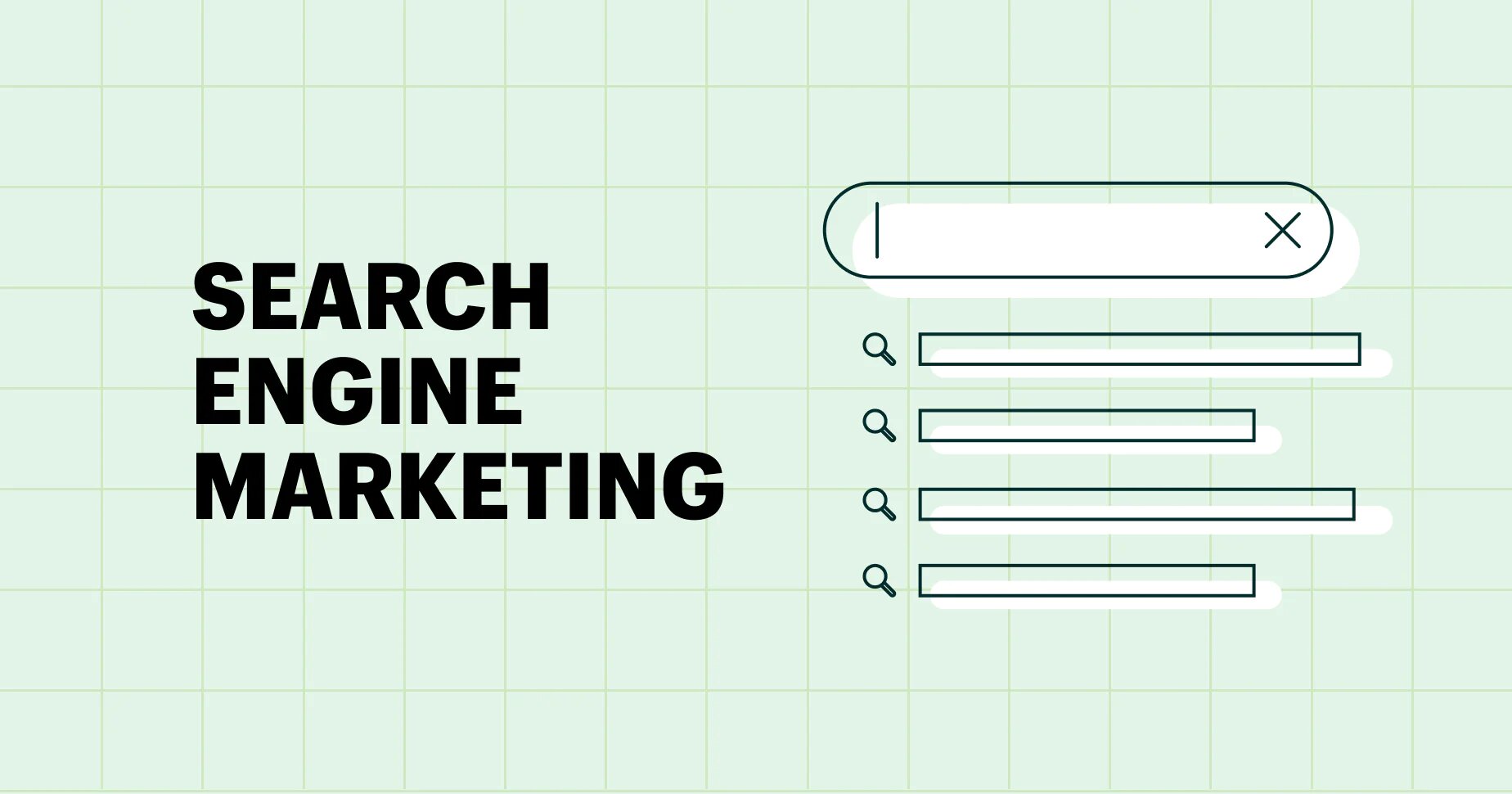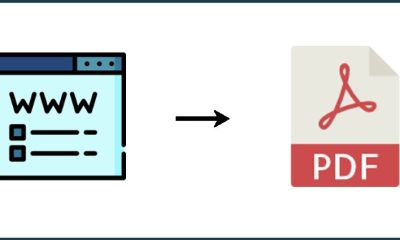Career Tips
What Is Search Engine Marketing? – A Simple Guide

When was the last time you needed to purchase a product? Most likely, you began your inquiry using a search engine like Google. The first companies you see paid to be at the top, yet they are advertisements. This is a brief overview of search engine marketing (SEM). Read on to find out what SEM is, how it can help your business expand, and how to get started.
What Is Search Engine Marketing?
Search engine marketing (SEM) is the technique of increasing how customers find your product or service on a search engine (such as Google or Bing) via paid advertising. SEM used to refer to both paid and organic advertising, but it now only refers to paid advertising.
Why Is SEM Important?
- As search engines become the major method people find items, a great search engine marketing plan becomes increasingly important for a company’s success.
- Small, medium, and corporate organizations utilize SEM to reach out to potential clients at the exact moment they are searching for the product or service you provide. It’s also a non-intrusive kind of advertising because a potential customer is actively looking for the services you offer. SEM is also cost-effective for marketers because they only pay when someone clicks on their ad (known as pay-per-click, or PPC in internet marketing).
Who Should Use SEM?
Anyone with a product to sell online can benefit from SEM. Furthermore, these initiatives are straightforward to target and measure. “The best approach to think about [SEM] is to begin with the premise: a user enters a search engine with a specific question. If you can provide that answer—and it is beneficial for you to do so—you may gain from SEM,” said Michele Dappert, Senior Media Specialist at Planit, to Forbes Advisor.
Benefits of SEM
- Highly intent-driven. SEM allows you to meet customers when they are searching for the items and services you offer. “You’re contacting folks in the’market’—for whatever reason—right when they need an answer or a solution. Capturing lower-funnel activity allows you to ‘nudge’ someone into buying your product or service without first convincing them of the need,” Dappert stated.
- Visible, fast. SEM is an easy and quick way for newer businesses to get started. “When you are a newer product in a crowded field, targeted SEM campaigns allow you to show up immediately next to more established competitors, getting your name out there with their coattails,” Dappert said.
- Real time, measurable. SEM allows you to see the ratio of people who click on your ad compared to those who buy your product or service and make changes accordingly. “Anyone who has a clearly defined goal—whether that be increased website sales, lead generation form-fills or increased blog readership—can use SEM to quickly measure increased traffic to the destination where people can complete that goal. And if you see a campaign isn’t working, it’s easy to turn that tactic off immediately and reallocate dollars without being set in a sunk cost,” Dappert said.
- Targeted. SEM also allows you to get very specific about the potential customers you want to target. “SEM dollars are spent at the keyword level. But any campaign can be geo-targeted, device-targeted, flighted for certain times of day or seasons and is, in general, a way to expand your reach to a target profile without spending too much (or relying on cookies),” Dappert explained.
SEM vs. SEO
There are many terms in online marketing with similar meanings, and it’s easy to get them confused. Additionally, many people have slightly different meanings for each term.
Here’s the difference between SEM and SEO in a nutshell:
- SEM refers to the process of paying for advertisements that appear on search engines.
- Search engine optimization (SEO) refers to optimizing website traffic from search engines to increase traffic organically.
Many factors determine which websites rank highest in organic search, including relevant keywords, the overall quality of the website content and the number of backlinks (how many other websites link to yours). Increasing SEO requires an upfront investment of time and effort, but once a website begins to rank high, the traffic directed to the web page is free. On the other hand, SEM advertisers are paying for each click. Read our guide to the best SEO software for small businesses in 2024.
The Basic Features of a Search Ad
- Headline: The headline is displayed at the top (the part of the ad that is hyperlinked and appears in blue on Google). Headlines have a 30- or 35-character limit.
- Description: Beneath the headline, you’ll find a text that’s a brief description. The descriptions have a 90-character limit.
- Extensions (Optional): Extensions are optional but give advertisers different possible actions someone could take on the ad. For example, a jewelry company might have multiple links to various earrings on one earring ad.
- Landing Page: This is the page on your website you’re directing potential customers to when they click on the ad.
There are several steps to creating a sponsored ad for a search engine. Here’s what the process entails.
Keyword Research
- Search ads target specific keywords that potential customers are searching for. The first step for SEM is to conduct keyword research and find out the different terms people use when they search for your product or service.
Keyword Cost
- Once you narrow down the words you want to rank for, the next step will be to consider the cost. “The most important factor is the competitiveness of the keywords that you’re bidding on. The more competitive the keywords, the higher the cost will be,” Jamie Irwin, Director and Search Marketing Expert at Straight Up Search, told Forbes Advisor. Other factors that can influence cost include your Quality Score, ad rank and click-through rate (CTR).
- Google uses a factor called Quality Score to determine how relevant and useful your ad is to the keywords you’re bidding on. The closer the relevance, the higher your Quality Score will be and the lower your CPC (cost per click) will be.
SEM Targeting
Part of what makes SEM an effective marketing strategy is that it allows advertisers to specify their target audiences. For example, you can target customers by location, device and certain times of day. Targeting ads based on your ideal potential customers is a way to increase the chances you will reach your intended audience and make the most of your advertising budget.
Ad Auctions
To place an ad in a search engine, you will need to enter an ad auction. For example, Google Ads evaluates ads by the Quality Score based on the keywords you want to bid on and your proposed price.
Search Engine Marketing Tools
- Semrush: Semrush is an online tool marketers use for SEM, including everything from conducting keyword research to traffic analytics, and ad analysis. You will be able to research top keywords and see which ones are ranking highest and which ones are hardest to rank for.
- Google Ads Keyword Planner: Since most advertisers are likely aiming for their ads to appear on Google, Google Ads Keyword Planner is a helpful tool for keyword research. The tool will also suggest bid amounts for specific keywords to help you come up with a budget. Plus, you’ll be able to create an advertising plan and launch your campaign all through this tool.
- Google Trends: Google Trends is a free and helpful tool to use when starting your research. You’ll be able to see how popular a specific term is on Google over time (since 2004), limit your search to a particular country and find related queries based on the words you are researching, which help with brainstorming ideas for your ad.
How Much Does SEM Cost?
There’s no one-size-fits-all answer when it comes to the cost of SEM. According to Irwin, a ballpark estimate can range anywhere from $500 to $10,000 per month. “Of course, this number could go up or down significantly depending on your needs and budget,” he said.
You can also adjust your budget as you gain more insight into which keywords work best. “The good news is that the tactic is so highly measurable, you can see what’s working and what isn’t—and adjust the budget accordingly. The bad news is the honest answer to this question is: it depends,” Dappert said.
“When setting up your campaign, you should research historical Industry Cost-Per-Click (CPC) rates in keyword-planning and search-forecast tools to get an estimate of how much your competitors spend,” Dappert suggested. She adds that CPC ranges from $2 to more than $55 depending on the industry and that reasonable conversion rates are usually between 5% to 10% and there’s a base floor of 15 clicks (per day, per ad group) needed for the engine to optimize.
“The best strategy when assessing cost is to look at what competitors spend, keeping your goal value in mind, and recognizing that you may have to spend a bit more than them to get yourself on page one,” Dappert added.
Bottom Line
SEM is one of the best ways to drive traffic to your website to sell a specific product or service. SEM allows you to create targeted ads that appear on search engines and reach potential customers who are actively interested in the product or service you offer. Any business, small or large, can use SEM strategies. While there is a lot to learn about what makes an effective search ad, the good news is that there are plenty of online tutorials to learn more.
Frequently Asked Questions
- Are SEM and Google Ads the same thing?
- Is Facebook an SEM?
- What is an example of SEM?
- Are SEM tools secure?












